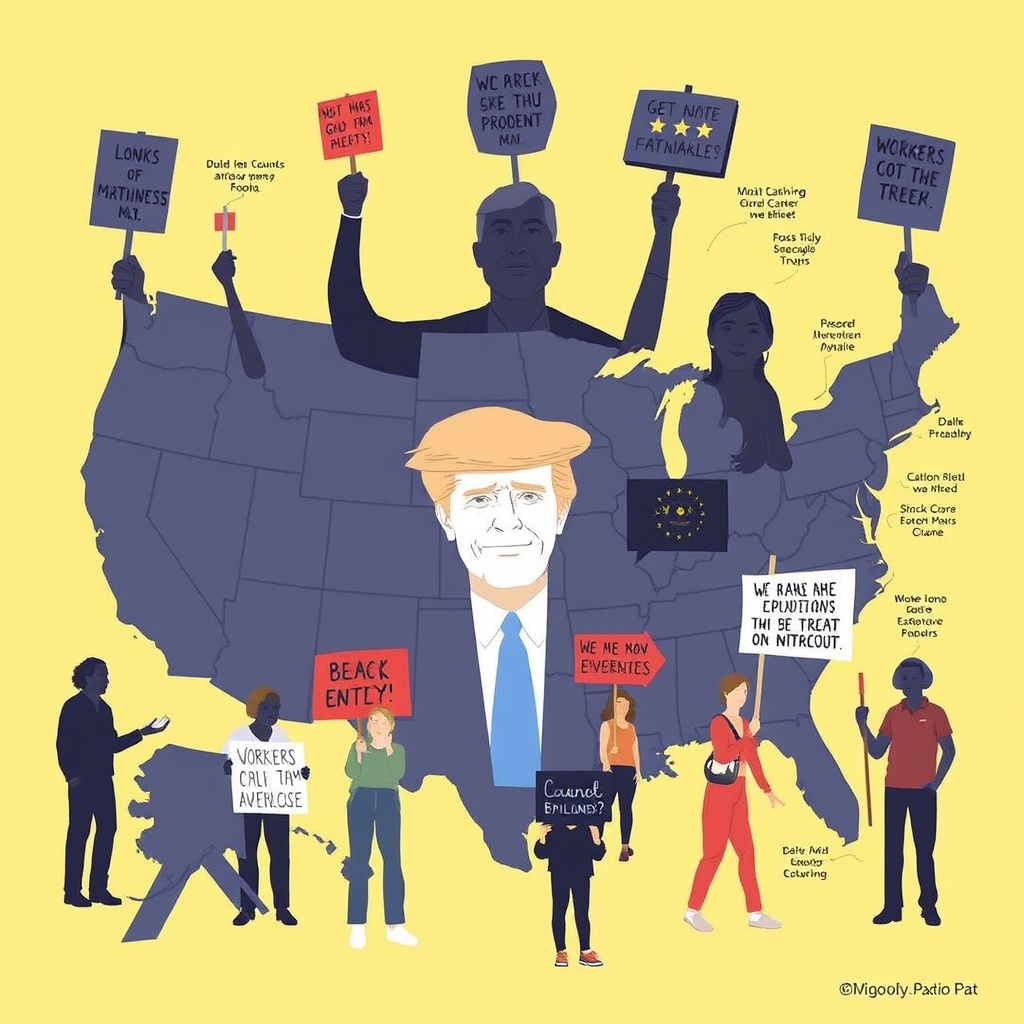Introduction
On Labor Day, September 2, 2025, a wave of protests swept across the United States, with over 1,000 demonstrations held under the banner "Workers Over Billionaires." These protests, which took place in numerous cities and towns, aimed to highlight the growing wealth gap between the richest Americans and the working class. The movement, which gained significant traction, targeted President Trump and other wealthy individuals, criticizing their policies and practices that protesters believe have exacerbated income inequality. This article will delve into the context, significance, and implications of these protests, exploring the underlying issues that led to this widespread mobilization and what it might mean for the future of labor rights and economic policies in the United States.
Background and Context
The "Workers Over Billionaires" protests are part of a larger narrative about income inequality and labor rights in the United States. Over the past few decades, the wealth gap between the richest and the poorest Americans has grown significantly. According to data from the Economic Policy Institute (EPI), the wealthiest 1% of Americans now hold more than 40% of the country's wealth, while the bottom 90% hold just 27%. This disparity is attributed to various factors, including tax policies that favor the wealthy, the decline of unionization, and the shift towards a gig economy that often lacks the protections and benefits of traditional employment.
The protests also come at a time when the minimum wage, which has been a focal point of labor rights discussions, has not kept pace with inflation or the cost of living in many parts of the country. The federal minimum wage has been $7.25 per hour since 2009, and despite numerous calls for its increase, there has been little movement at the federal level. This has led many states and cities to implement their own higher minimum wages, reflecting a grassroots push for better compensation for low-wage workers.
The Protests and Their Demands
The "Workers Over Billionaires" protests were marked by their widespread nature, with events in small towns and major cities alike. The protests were organized by a coalition of labor unions, community groups, and social justice organizations, indicating a broad base of support for the movement's goals. Participants carried signs with slogans like "Fair Wages Now" and "Tax the Rich," and many shared personal stories of struggle and hardship due to low wages and lack of benefits.
The central demands of the protests included a significant increase in the federal minimum wage, stronger protections for workers' rights to organize and unionize, and a more progressive tax code that would require the wealthy to pay their "fair share." There were also calls for policies to address the gender and racial pay gaps, as well as for increased funding for social programs that support low-income families.
Impact and Implications
The impact of the "Workers Over Billionaires" protests will likely be felt in several areas. First, they bring attention to the ongoing issue of income inequality and the need for policies that support the working class. By mobilizing thousands of people across the country, the protests demonstrate a level of public support for labor rights and economic reform that could influence political discourse and policy decisions.
Second, the protests highlight the role of collective action in achieving social and economic change. The labor movement has a long history of using protests, strikes, and boycotts to push for better working conditions, higher wages, and greater protections for workers. The success of these tactics in the past, such as the Fight for $15 movement, which has led to numerous cities and states adopting a $15 minimum wage, suggests that continued mobilization could lead to tangible gains for workers.
Finally, the protests underscore the deepening political divide in the United States, particularly around issues of economic policy. The targeting of President Trump and other wealthy Americans reflects a belief among many that current economic policies favor the interests of the rich at the expense of the poor and middle class. This perception is likely to continue shaping political debates and elections, as voters increasingly prioritize issues related to economic fairness and opportunity.
Case Studies and Examples
Several cities and states have already seen the positive impact of progressive labor policies. For example, cities like Seattle and San Francisco, which have implemented higher minimum wages, have seen significant reductions in poverty rates without the job losses often predicted by opponents of such measures. Similarly, states with stronger union protections have higher rates of union membership and better compensation for workers.
The Fight for $15 movement, which began among fast-food workers in New York City, is another example of how grassroots organizing can lead to national change. What started as a small group of workers demanding a $15 minimum wage and the right to form a union without retaliation has grown into a global movement, with numerous victories in cities and states across the United States and internationally.
Conclusion
The "Workers Over Billionaires" protests on Labor Day 2025 mark a significant moment in the ongoing struggle for labor rights and economic justice in the United States. By highlighting the stark inequalities in wealth and opportunity, these protests aim to galvanize public support for policies that prioritize the needs of workers over the interests of the wealthy. As the country moves forward, it will be important to watch how these protests influence political discourse and policy decisions, particularly in the lead-up to future elections.
Ultimately, the success of the "Workers Over Billionaires" movement will depend on its ability to sustain momentum and translate public support into concrete policy changes. This will require continued mobilization, strategic alliances between labor unions and community organizations, and a clear, compelling narrative about the need for a more equitable economy. By learning from the past, building on current successes, and pushing forward with determination, the movement for labor rights and economic justice can achieve meaningful victories for workers and help build a more just society for all.


Leave a comment